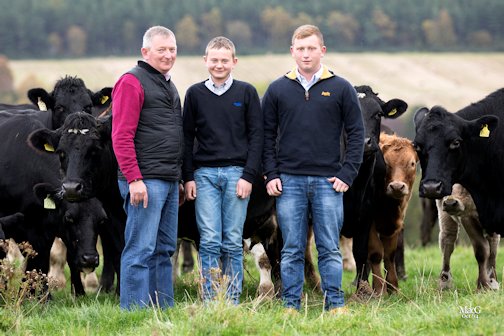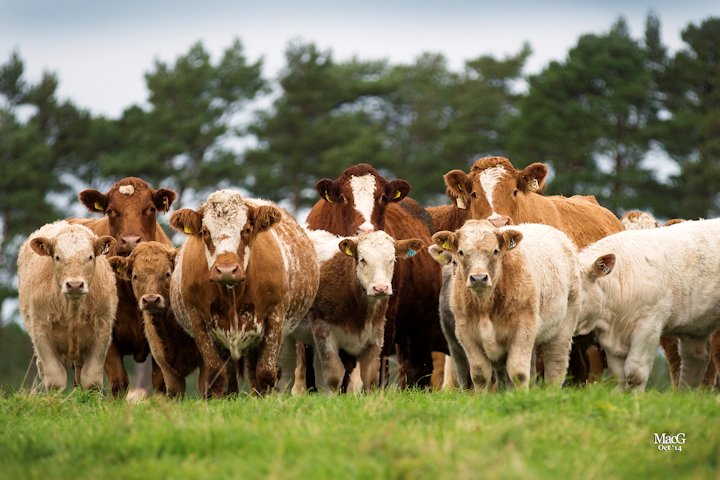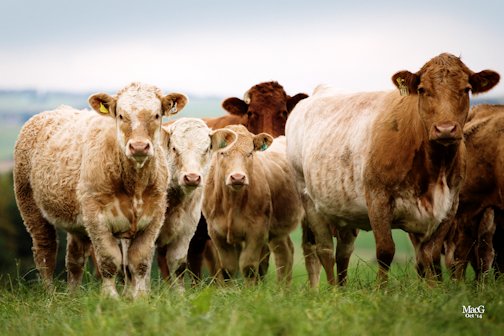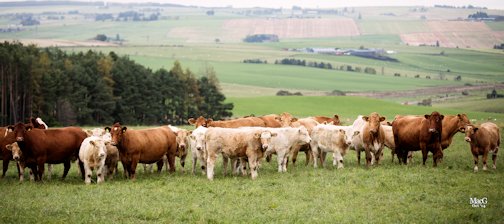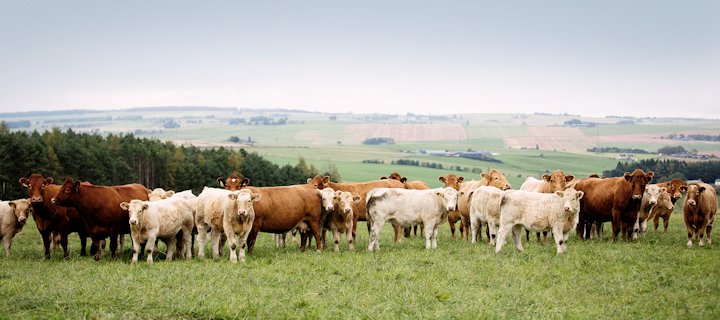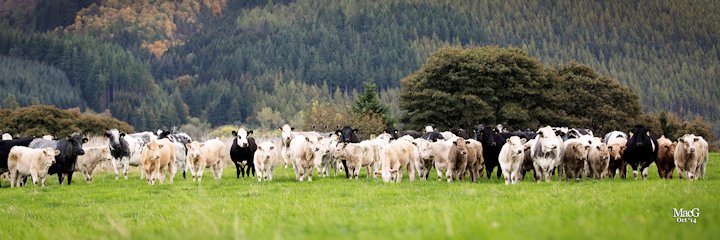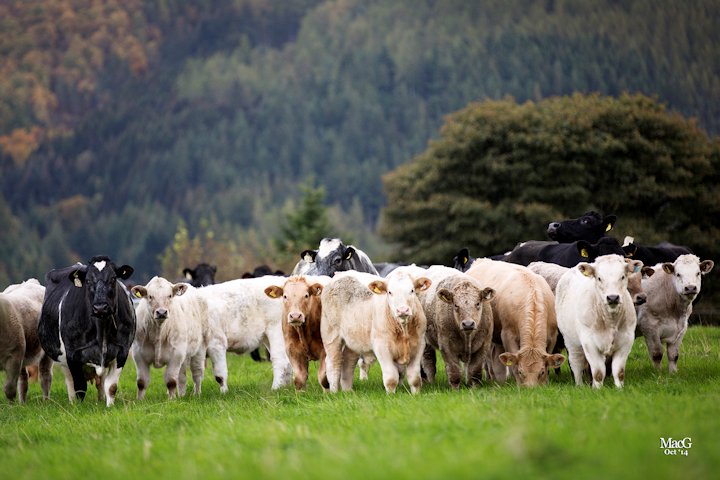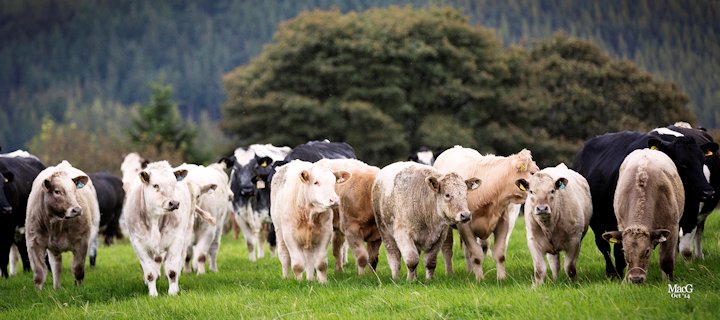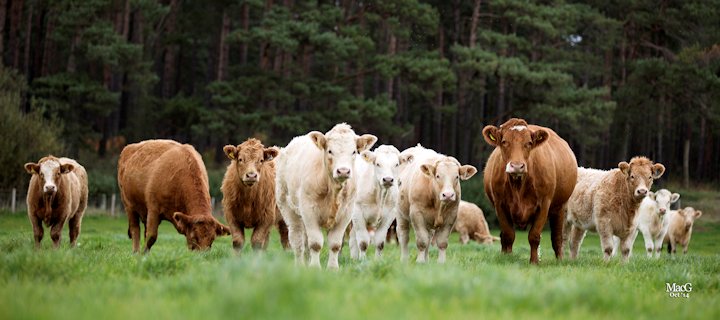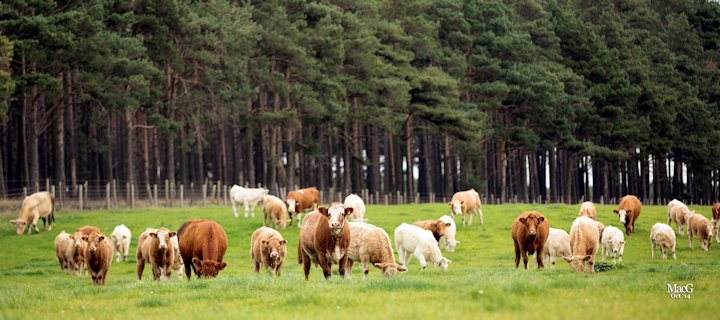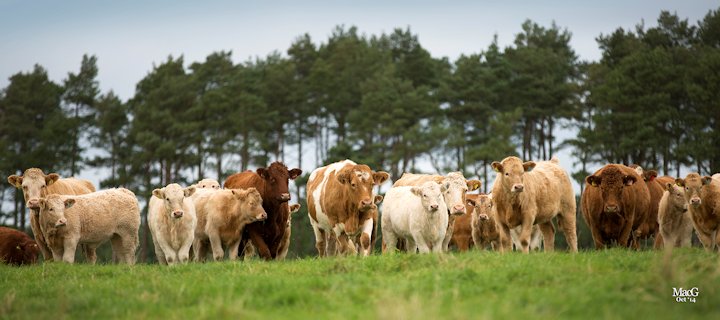Farming on a large scale in the North-east of Scotland, Philip Simmers has found that using Charolais bulls across his suckler herd, suits his grass-based system perfectly.
In partnership with his brother Simon, the Simmers – engineers by trade – run an extensive farming business across Aberdeenshire and Morayshire. Backmuir Trading Ltd comprises 2500 acres of cereals and a large suckler herd, with the beef operation based at Backmuir Farm, Keith.
Having tried various beef breeds over the years, they now predominately use Charolais bulls – of which they need 50 at any one time.
“With the Charolais calves, you get weight at a young age, and on the silage-based diet that we are feeding, there’s no way we would get the same return with any other breed,” explained Philip, who first began investing in land in the 1980s.
The Backmuir team now consists of two tractor men, five stockmen, plus Philip and his family and Simon and his family.
The beef system includes Sim-Luings, pure Luings, Limousins and Simmentals, plus the cross cows – all of which are run separately, for management purposes. The whole herd calves in the spring, with the Charolais calves all brought back to be wintered at Backmuir, from where they’re then sold as stores at between nine and 13-months-old through Thainstone Mart.
“We keep the calves in batches, so we know which calves are off of which bulls, and all of our cattle are electronically tagged, so that we can keep track of them at any time. The calves are all born between March and April and weaned by the beginning of November. They don’t receive any creep feed, just grass and milk from their mothers, then they go on to a silage-based diet with home-grown cereals,” said Philip.
In 2014, the bullock calves (weighing an average 448kg) levelled out at £1180, while the heifers, with an average weight of 418kg, made £1060.
“The Charolais calves are doing so well, that we’re currently making plans to finish them ourselves. We think we would only need to keep them for a few more months, and be finishing them at 16-17-months,” explained Philip.
Another change underway is the gradual switch to an entire Sim-Luing suckler herd. With the demand increasing for this hardy female, the Backmuir team are now running pure Luings with Simmental bulls, to breed their own replacements.
“We hope to eventually have all Sim-Luing cows, on a grass based system and going to the Charolais bull. They are big, strong cows, which calve really easily and keep their condition well, and put to the Charolais, they produce a very consistent, strong batch of calves.”
Philip is also particular about his choice of bulls, and because he needs so many at a time, if he sees one that suits him, he generally buys it.
“What I look for in a bull is the same as what I want to see in the calves – shape, length and good on their feet. I never buy on figures because I can see what I want just by looking at the bull, and if you buy the right type, you don’t get calving problems. I often buy breeders’ type bulls to put on the suckler herd, because I’ve found that it’s worth paying extra to get the right type of bull. That’s a really important part of our beef system, and it makes a huge difference to the calves,” he added.
Having now used Charolais bulls for around 30 years, Philip is confident that the breed has continued to improve, and finds he’s never short of choice at bull sales. However, he is wary of bulls being over-fed. “The worst thing is bulls that have been pushed so hard before a sale, that are then no use when you get them home. They need to be good on their feet, and that is less likely if they’ve been over-pushed. Our calves are doing 1.6-2kg per day on a silage-based diet – that is what Charolais are capable of, so there shouldn’t be any need for them to be over-fed.”
